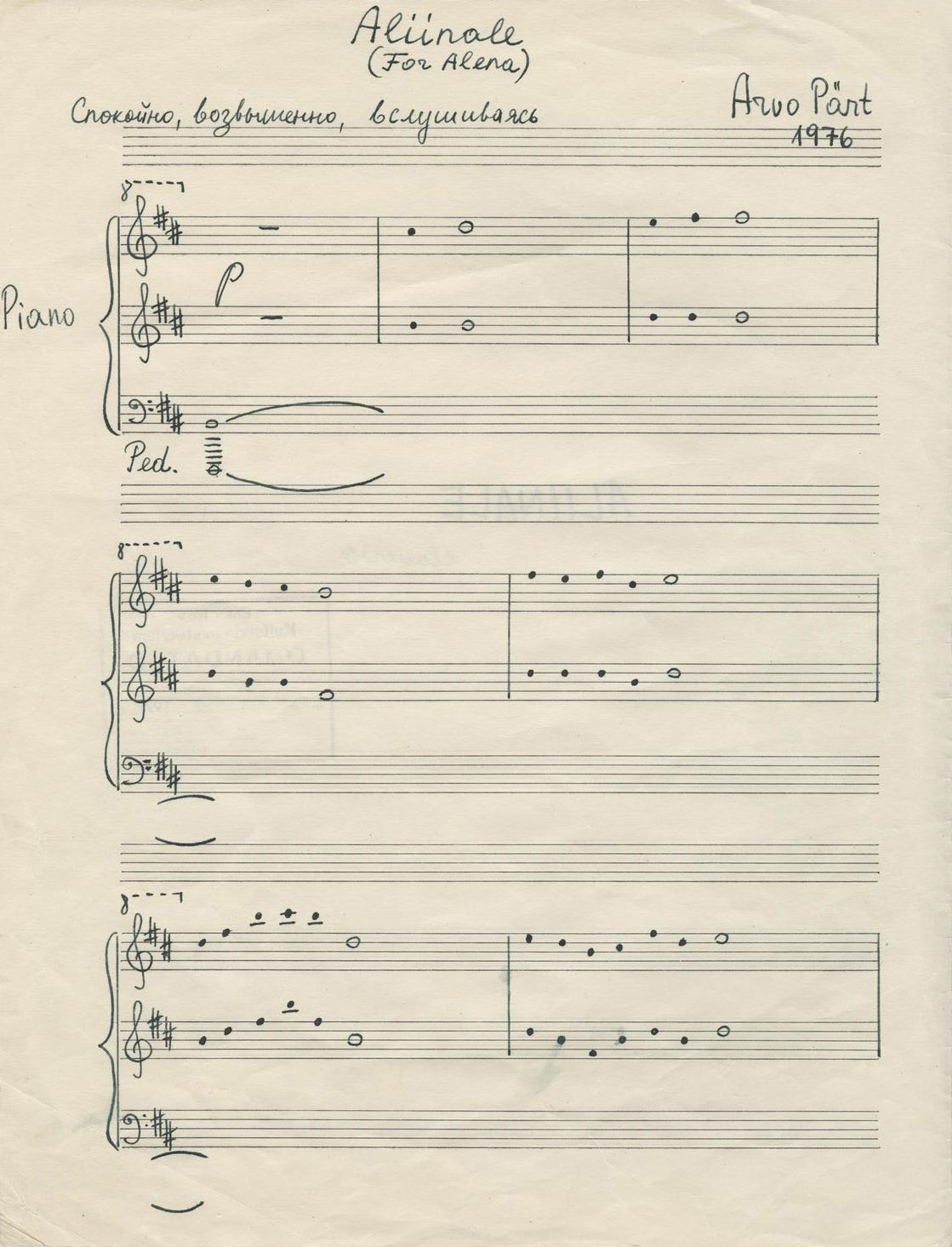The piano piece Für Alina is one of the most petit, yet one of the most significant works in all of Arvo Pärt’s oeuvre. It was born in February 1976, the first work in a number of years, with which Pärt emerged from a prolonged creative crisis; it is also his first piece to be written in the tintinnabuli style.
As is characteristic to the tintinnabuli style, the music of Für Alina follows a few strict mathematical rules. For instance, the voice of the melody grows by one note in each bar and, reaching its maximum (eight notes) begins to diminish again. The free-flowing melody is united throughout the piece with the so-called tintinnabuli voice, always following its nearest triad. These two voices are united into an inseparable whole. Interestingly, the compos…
The piano piece Für Alina is one of the most petit, yet one of the most significant works in all of Arvo Pärt’s oeuvre. It was born in February 1976, the first work in a number of years, with which Pärt emerged from a prolonged creative crisis; it is also his first piece to be written in the tintinnabuli style.
As is characteristic to the tintinnabuli style, the music of Für Alina follows a few strict mathematical rules. For instance, the voice of the melody grows by one note in each bar and, reaching its maximum (eight notes) begins to diminish again. The free-flowing melody is united throughout the piece with the so-called tintinnabuli voice, always following its nearest triad. These two voices are united into an inseparable whole. Interestingly, the composer allows himself to break both of the rules. The first time is when the voice moving through the b minor triads steps aside, stopping on the “false” c sharp note. This tiny but very striking acoustic event is further accentuated by the breaking of the pedal point that has been held down throughout the piece. The second rule is broken in the final bar, when the melody, which by now should be reduced to just a single note, is suddenly followed by three further notes, as if a new song, a new journey might still begin from here. It is remarkable that this natural union of strict rules and internal freedom, so inherent to the entire tintinnabuli music, should manifest itself already in the first work written in this new style.
Another major keyword to characterise all the tintinnabuli music and its aesthetic is silence. In Für Alina, it is present not just as the silence framing the piece, but, paradoxically, silence has been written into the music as an acoustic space of sorts. As a hint for the pianist, the composer has noted that the piece be played "in calm, uplifted manner, listening to one's inner self".
Für Alina can be considered the key composition of Arvo Pärt’s tintinnabuli style and, symbolically, the starting point for all of his later work. Many listeners also seem to associate it with the beginning of new life because since its recording in 1999 by ECM Records, the composer has received numerous messages telling him that his Für Alina has been played at the birth of a child. Moreover, many of the girls that were born listening to the music have been named Alina. The “real” Alina of the piece was the daughter of close friends of Arvo and Nora Pärt, separated from her mother by the Iron Curtain — the daughter being left in England and the mother in the Soviet Union.


